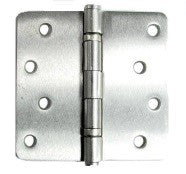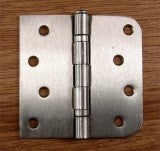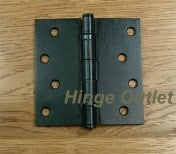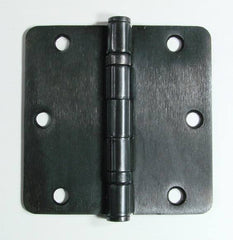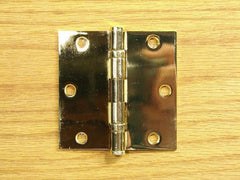If this is your first attempt at purchasing door hinges for you home, you may be in for a big surprise. Many times, customers call us and ask for the standard door hinges to replace in their home. They quickly become overwhelmed by the questions we ask them. When planning your door hinge purchase, we recommend that you understand your options before making a purchase by taking the following steps:
- Educate yourself on how to determine the size of a hinge.
- Educate yourself on the different types of residential hinges for interior and exterior doors.
- Count all of your interior and exterior doors. While counting the doors, make note of the size and type of hinges needed for each door.
How do I measure a door hinge?
You need to understand how to measure a hinge. It is very easy. You start by measuring from top to bottom and then from side to side. Once you have determined your measurements for that, you need to understand how to determine if the hinge has a radius corner or a square corner. The diagram below illustrates the different radius corners:
As noted in the diagram, you can always make sure you have the right radius corner by using a dime or nickel.
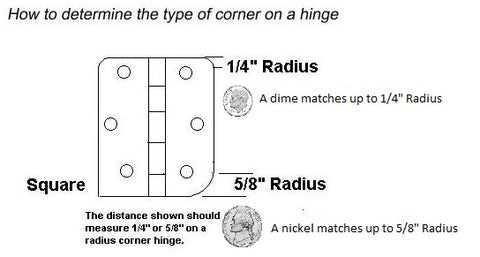
How do I determine the size and hole pattern for my exterior residential doors?
Residential Exterior doors include the following:
- Entry doors
- Doors leading to your backyard
- Doors leading to and from your garage
Most residential hinges for your exterior doors will come in one of the following sizes and have a zig-zag hole pattern:
There is also something called a Template hole pattern which has a crescent half-moon shape. Very rarely, but on occasion, a residential exterior door will have a template hole pattern hinge installed on it. Please make a note of the hole pattern of this below:
How do I determine the size and hole pattern for my interior residential doors?
Residential interior doors include the following:
- Bathroom doors
- Bedroom doors
- Closet doors
- Dining room doors
- Basement doors.
Most residential hingesfor your interior doors will come in one of the following sizes and have an arch hole pattern:
What is the difference between ball bearing butt hinges, standard plain bearing butt hinges, and spring hinges?
- Ball bearing hinges have two ball bearings in the knuckles of the hinges.
- The standard plain bearing hinges have no ball bearings.
- Spring hinges, also known as self-closing hinges and adjustable hinges, are now required in many states to install on the door leading into your garage. The adjustable tension spring in the hinge automatically closes the door helping to minimize any harmful gas fumes from getting into your home.
In general, the ball bearing hinges are higher quality and prevent squeaking of the hinges better than the plain bearing hinges. Hinge Outlet carries both, but we recommend the ball bearing hinges for most residential applications. For more in depth information on the types of hinges, please visit our Hinge Resource Library.
How many hinges do I need to purchase?
Now that you are educated on the hinge sizes, hole patterns, and types of hinges for residential use, you need to start counting your doors. Once you have determined how many interior and exterior doors you have along with the types and sizes of hinges you need for every door, you are ready to go shopping. A couple things to make a note of before purchasing your door hinges:
- Most doors have three
- Most hinges today are sold in pairs.
- A pair of hinges is two complete sets of hinges as displayed below. Unfortunately, if you only had to replace hinges for one door, you would need to order two pairs of hinges.
 
|
For more information on Installing Door Hinges, take a minute to watch the following video.
For more information on how to order hinges, please ContactUs.
Thank You,
The Hinge Outlet Management Team


















































































































